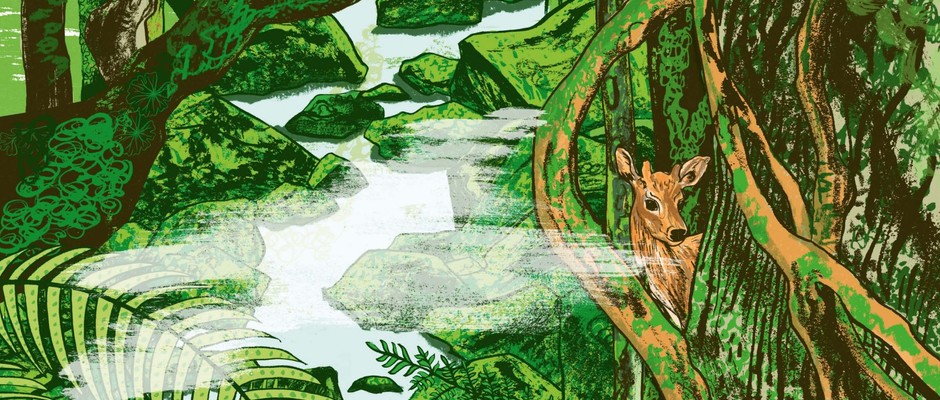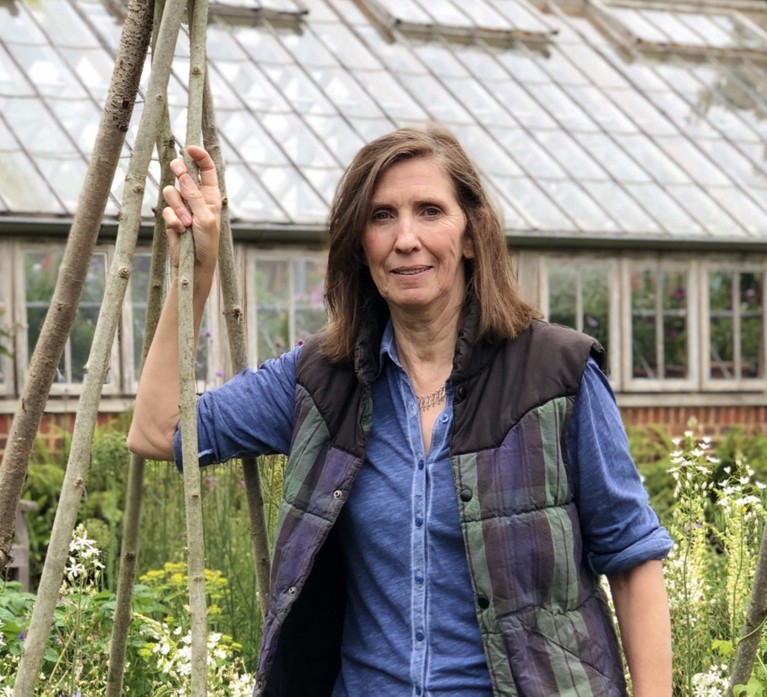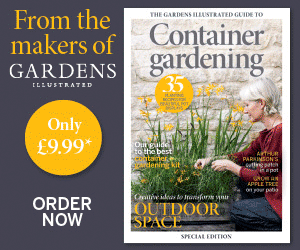
Japanese island of Yakushima and its unusual evergreen shrub
On the southern Japanese island of Yakushima, horticulturist Hannah Gardner, discovers mossy forests filled with hollow ancient tree stumps and an unusual evergreen shrub. Illustration Alice Pattullo
Sugi is the national tree of Japan, commonly planted around shrines and temples but revered and cultivated in gardens throughout the temperate world. There is no better place to experience the majesty and ancestry of these singular conifers than the hauntingly beautiful, primeval rainforests of Yakushima, home to 1,900 plant species and hundreds of ancient yakusugi or Japanese cedar trees of at least 1,000 years old.

Yakushima lies 38 miles south of sub tropical Kyushu, the most southerly of Japan’s four main islands. The sugi (Cryptomeria japonica) tree is an endemic Japanese conifer with a high percentage of resin. The oily timber is pleasantly scented, lightweight, strong and highly desirable. Much of the island is now protected, the warm-temperate forest designated a Unesco World Heritage site in 1993, following an intense period of destructive logging in the early 20th century.
Inspiration for the trip
It was a grainy 1914 photograph of the great plant hunter Ernest Henry Wilson within the hollow remains of a giant 3,000-year-old sugi on Yakushima that inspired me to follow his footsteps into the forest.
When to go
Spring and late autumn are popular as temperatures are cooler and in April there is mountain cherry blossom. Avoid the rainy season, it’s intense and runs from June to mid July. The humidity on Yakushima is high, with the mountains considerably cooler than the coast. It is always advisable to carry waterproofs if you are hiking.
More like this
Where to go
The interminable rains feed raging rivers that pound down the high mountains, carving through the dark, granite bedrock and acidic soils of the emerald forest to emerge in spectacular waterfalls. Shiratani Unsuikyo Ravine (600-1,000m) is a shady, fairy-tale valley shrouded in moist swirling mists and drenched in intrigue. Here you will find a moss forest where the filtered light is a surreal green. Annual rainfall of more than 8m is not uncommon here, and bryophytes and ferns dominate the forest floor, colonising boulders, tree trunks and cloaking sprawling root systems, the entire forest darkened by epiphytes and hanging swathes of dewy moss. The vertical ecosystems found on Yakushima extend from the introduced subtropical Chusan palms, Ponkan orange trees and wild Lilium longiflorum of the east coast up to montane temperate rainforests and sub-alpine moors amid the central peaks where the rare Gentiana yakushimensis clings on for dear life.
The footpaths that climb through these diverse, dense bands of vegetation are muddy, stony and steep. Extraordinary, venerated cedars with their second skin of moss and ferns grow alongside Japanese hemlock (Tsuga sieboldii) and momi fir (Abies firma) but it’s not just conifers. At lower elevations, in dappled shade, the broadleaf evergreen laurel forests are full of interest, the lithe copper trunks of Stewartia monadelpha and Lagerstroemia subcostata var. fauriei, slink between broader-limbed trees. I spotted Camellia sasanqua and the drupes of Callicarpa japonica and wondered at Daphniphyllum macropodum, a distinctive and handsome shrub with crimson petioles attaching the leathery leaves in a whorl.
Passing along the Ohkabuhodo Trail near the centre of the island at an altitude of 1,100m you’ll discover the remarkable Wilson’s Stump. This hollowed stump, inside which Wilson was photographed in 1914, is that of a tree felled in 1586, its timber used to build a temple for the great Buddha statue at Hoko-ji temple in Kyoto. Carry on to reach Jomon Sugi the oldest and largest among the ancient trees. This bulbous and misshapen tree is hollow, and of very advanced but uncertain age (2,200-7,000 years), its girth a stout 16.4m.
If you are not for turning, an ambitious three-day traverse across the island’s steep core leads on. There are a number of basic mountain shelters along the route that will take in Mt Miyanoura (1,936m), the southernmost location in Japan for snowfall. Beyond the last band of forest lies marshy open ground, the peat flecked with tiny alpine Primula sieboldii and low thickets of tough bamboo (Pseudosasa owatarii), graceful Miscanthus and Rhododendron yakushimanum, with deep-pink buds magically producing an abundance of blousy, pure-white flowers.
Plant to grow at home
If I had space for just one Japanese shrub it would be the evergreen Illicium anisatum (known as Japanese star anise or shikimi). It was introduced to England in 1790, but first seen by me outside a mountain hut in Yakushima. Upright and eye catching, it has dark, glossy leaves and clusters of unusual, many-petalled flowers the colour and texture of church candles. These appear in late spring. The seedheads look like star anise but are highly toxic. As both foliage and wood are strongly aromatic it is burned as incense in Japan. Plant in full sun or partial shade. It will tolerate acid or neutral soil as long as it is humus-rich and moist but well-drained. Select a sheltered spot away from cold winds, near a wall would be good. It is hardy to -5°C and beautiful near a gentle drift of the grass Miscanthus sinensis ‘Yakushima Dwarf’.
Guides
The Yakushima Guide by Clive Witham (Yakumonkey, Mangrove Press, 2017)
Wildflowers of Japan by Ran Levy (Kodansha International, 1995).
Where to stay
Cottage Morinokokage 292-9 Funayuki, Yakushima, Kumage District, Kagoshima 891-4312, Japan. Tel +81 997 46 2789, morinokokage.net Offers a range of cosy, pine-scented, self-catering coastal cottages with wonderful mountain views.
Sankara Hotel and Spa 553 Haginoue Mugio, Yakushima, Kumage District, Kagoshima 891-4402, Japan. Tel +81 997 47 3488, rakuten.com A luxurious coastal hotel with fabulous food and service.
Hannah Gardner is leading our exclusive reader tour to explore Japan’s hidden garden gems in September.

Niwaki bundle worth £57 when you subscribe
Subscribe to Gardens Illustrated magazine and claim your Niwaki bundle worth £57
*UK only

Container Gardening Special Edition
The Gardens Illustrated Guide to Container Gardening.
In this special edition, discover colourful flower combinations and seasonal planting schemes for pots designed by leading plantspeople, and essential know-how for container gardening success. Just £9.99 inc UK p&pBy entering your details, you are agreeing to our terms and conditions and privacy policy. You can unsubscribe at any time.

Gardens of the Globe
From botanical wonders in Australia to tranquil havens closer to home in Ireland, let this guide help you to discover some of the most glorious gardens around the world
By entering your details, you are agreeing to our terms and conditions and privacy policy. You can unsubscribe at any time.




